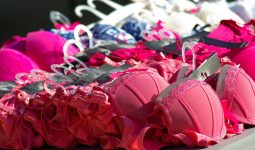Fabrics come in different textures, designs, etc., and nobody overlooks the lace fabric in the fashion industry.
Though the different types of lace are similar, the methods of making each lace differ. In the past, lace was a handmade material that only wealthy people used.
But nowadays, different types of lace materials are available for everyone. We can even use lace fabric to make a wedding dress.
However, every lace material is of good quality and speaks luxury everywhere. Below is the list of lace types available.
1. Venise Lace
Venise lace is an old fabric that existed in the 17th century and was first used in Italy. People also call this lace the Guipure lace, meaning lace with no mesh.
It doesn’t require netting. Designers stitch the Venise lace on a dissolvable material. Later, the cloth is removed to reveal the beautiful design.
Further, handmade Venise lace is costly, but machine-made ones are affordable.
2. Chantilly Lace
Chantilly is among the different types of lace materials available, and they named this lace after a city in Northern France.
It is famous for its outlined design and fine ground. It was made from black threads with floral and botanical designs on a net base.
It’s also a lovely bridal lace for a wedding gown, and Chantilly lace is the most delicate lace available.
It has always been a favorite of royal ladies and top couture designers, whether in floral, traditional, geometric, or organic designs.
3. Edging Lace
Lace edging, or edging lace, is one of the different types of lace that is suitable for daily use. It’s a trim with one straight side and a rough side.
Mostly, the straight side contains a thread that the designer can pull to form gathers. This section includes French edging lace, which has openings for threading ribbons.
This lace pattern has an irregular shape and a delicate appearance. Further, you can find lace edging on gowns, curtain valances, blouses, and gowns.
4. Alençon Lace
Alencon lace is among the different types of lace fabrics available. Alençon is a beautiful French lace that originated in France.
They adapted this lace design from Venetian lace in 1675. It is also known as the “Queen of Lace.”
Lace production originated in Alençon in the 16th century, and designers created this lace by hand back in the day.
Alençon was a luxury because it was time-consuming and costly to produce. Only members of the royal family and the higher classes could afford it. It is a beautiful lace with a floral design and strong thread.
5. Gathered Lace
An additional beautiful type of lace design is gathered lace, which may be easily attached to the edge of a garment.
Because the gathers are already a part of the lace, it gives the appearance of being frilled.
With the top edge of this lace trim already gathered, the designer can stitch it onto various accessories to create a custom look.
6. Schiffli Lace
Schiffli lace is another name for chemical lace, and this design is machine-made. Designers first used these machines in the late 1800s.
Before the invention of chemical lace, embroideries, and lace were created using embroidery machines, which people call Swiss hand machines.
To make lace, a pattern is embroidered onto a sacrificial cloth that has been chemically treated so that it will dissolve once the pattern is set.
7. Insertion Lace
Insertion is among the different types of lace fabrics that exist. You can distinguish this lace design by its band design, which features a tiny and detailed pattern embroidered between two selvage edges.
Designers sew the insertion lace between two pieces of fabric and have two straight edges.
However, they can sometimes link two pieces of insertion lace together to produce a larger piece.
Further, skirts, silk blouses, and long gowns look beautiful with an insertion lace design. You can try it!
8. Battenburg Lace
Tape lace is another name for Battenberg lace, and Sara Hadley of New York designed and created it for the first time.
The designer creates this lace with bobbins and tape to produce a new design. However, in the original Battenberg lace, only one stitch, the buttonhole picot, was used.
But they now use flat wheels and rings. Battenberg lace was widely employed as an edging in the nineteenth century, especially in the United States.
At the end of the nineteenth century, companies sold a wide range of tapes and designs stamped on pink or white muslin.
9. Tatting Lace
Tatting is a method for handcrafting a particularly strong lace from a combination of knots and loops that is particularly popular in the fashion industry.
It requires specific cotton, which the designer knots to make a warp and weft of knots with a shuttle.
Tatting lace is delicate and fine, useful for edging collars, pillows, and other decorative items like this.
10. Swiss Entredeux Lace
This lace design is the last on our list of the different types of lace fabrics. It is a strip of cloth that looks a little like a ladder, with holes equally spread throughout the strip of fabric.
This lace is made from cotton batiste, which is soft and fine cotton for sewing. There is an opening between the lace and fabric with the ribbon around the openings on either side.








